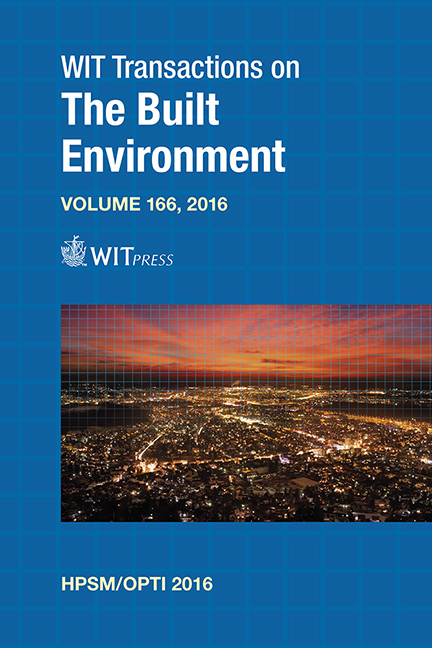Fatigue Property Of Natural Fiber After Alkali Treatment
Price
Free (open access)
Transaction
Volume
166
Pages
8
Page Range
343 - 350
Published
2017
Size
1,057 kb
Paper DOI
10.2495/HPSM160321
Copyright
WIT Press
Author(s)
H. Katogi, K. Takemura, R. Sebori
Abstract
Generally, interfacial adhesion between natural fiber and biodegradable resin can be improved by alkali treatment. The effect of alkali concentration of treatment on fatigue property of natural fiber as reinforcement should be examined to assure the use of structural material using green composite. The purpose of this study is to examine fatigue properties of 1% and 15% alkali treated natural fiber. Jute fiber was used as specimen. Alkali treatments were conducted in distilled water with NaOH 1% and 15%. X-ray diffraction measurement of alkali treated jute fiber was conducted. Fatigue tests and damage observations of non and alkali treated jute fibers were conducted. As a condition of fatigue test, the stress ratio was 0.1 and the frequency was 10Hz. As a result, following conclusions were obtained. Peaks of diffraction intensities of 1% and 15% alkali treated jute fiber appeared at 22.8° and 22°, respectively. This phenomenon indicated that cellulose in constitution materials of 15% alkali treated jute fiber changed cellulose I to cellulose II. Fatigue strengths of non, 1% and 15% alkali treated jute fiber decreased with an increase of number of cycle. Fatigue strengths at 106 cycles of non, 1% and 15% alkali treated jute fibers were 280MPa, 320MPa and 181MPa, respectively. The number of crack in surface of jute fiber at 103 cycles increased with an increase of alkali concentration of treatment. Therefore, fatigue property and damage of jute fiber was affected by alkali concentration of treatment.
Keywords
natural fiber, fatigue property, alkali treatment, alkali concentration, crack, cellulose





